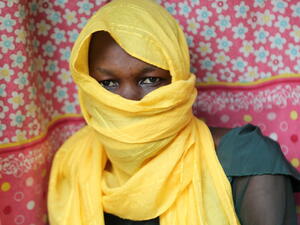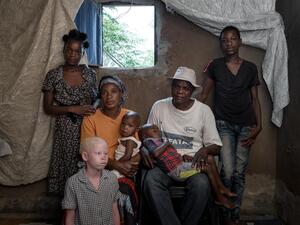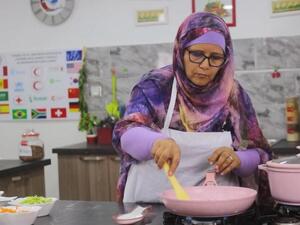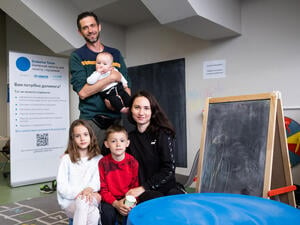Chad: some 40 percent of children suffering from chronic malnutrition
Chad: some 40 percent of children suffering from chronic malnutrition
A just-completed joint UNHCR-WFP mission has concluded that the nutritional health of Sudanese refugees in eastern Chad has stabilized and that malnutrition levels among refugee children have declined since the start of a blanket supplementary feeding programme in August. But it also points to a serious deterioration in the nutritional health of the local population and calls for a concerted effort to help destitute Chadians living near refugee camps and along the border with Sudan.
The joint mission, which wrapped up yesterday, said a series of factors - including two consecutive poor rainy seasons, the decimation of cattle herds, overused grazing lands, and the depletion of food reserves due to sharing with the refugees - have led to a severe nutritional crisis for the local population. Some 40 percent of Chadian children are suffering from chronic malnutrition compared to 17 percent under normal circumstances. The report said access by the local population to the supplementary feeding programme in the refugee camps should be further facilitated.
Among the refugees, the mission noted a decline in the number of admissions to therapeutic feeding centres in the camps, improvements in the food distribution pipeline, vaccination campaigns, and an improvement in water quality. These factors indicate improvements in nutritional health among refugee children (to be confirmed by upcoming nutrition surveys) since a June interagency study conducted by the Centers for Disease Control. The June study indicated that 38.8 percent of the children surveyed suffered from global acute malnutrition while another 6.4 percent showed severe acute malnutrition. Ten percent malnutrition and about 2 percent severe malnutrition are considered normal levels during a humanitarian emergency. The supplementary feeding programme, which is scheduled to end in January, has benefited more than 50,000 children under five years old as well as pregnant and lactating women in the camps. Thousands of Chadians have also benefited from the programme.
The mission recommended carrying out a follow-up nutritional survey that would include villages surrounding the camps in order to identify the nutritional needs of the local population. It called for the extension of the current programme to monitor the adequacy of refugee general food rations and efficiency of the food distribution system (food basket monitoring), and the establishment of monitoring of food use after distribution (post-distribution monitoring), given what the mission saw as the need for greater supervision during the general food distributions and numerous irregularities in the registration process. These two programmes would provide necessary information about the efficiency of the nutritional programmes and serve as a tool for future planning.
The mission placed special emphasis on the need to carry out a computerized verification of the refugee population, currently estimated at nearly 186,000 people in 11 camps. The new census should be carried out by going from tent to tent in each camp. UNHCR and WFP will work together closely in the planning and execution of the exercise.








